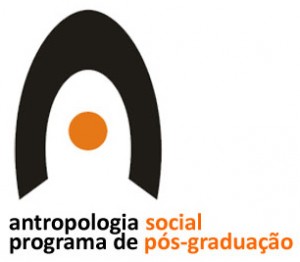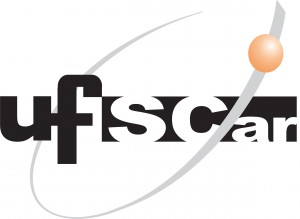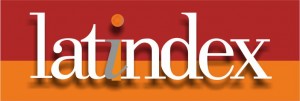A Antropologia está levando o animismo a sério demais?
DOI:
https://doi.org/10.52426/rau.v5i1.130Resumo
De que modo podemos levar o animismo indígena a sério, no sentido proposto por Viveiros de Castro? Neste artigo, apresento este desafio para todas as grandes teorias do animismo, de Taylor e Durkheim, passando por Lévi-Strauss e chegando a Ingold. Em seguida, proponho uma comparação entre a descrição do ambiente social cínico do capitalismo avançado, proposta por Žižek, em que a ideologia como “falsa consciência” perdeu sua força, e os Yukaghirs na Sibéria, para quem ridicularizar os espíritos é parte integral do jogo da caça. Todos sabem que, em suas atividades, estão seguindo uma ilusão, mas ainda assim continuam a segui-la; todos têm uma irônica autoconsciência que os leva a não tomar o etos dominante por seu valor de face. Isso me leva a sugerir uma alternativa: talvez tenha chegado a hora da antropologia deixar de levar o animismo muito a sério.
Referências
ÅRHEM, Kaj. 1996. “The cosmic food web: human-nature relatedness in the northwest Amazon”. In: P. Descola & G. Pálsson (eds.), Nature and society: anthropological perspectives. London: Routledge, pp. 185-205.
ARNOLD, Jeanne, E. 1996. “The archeology of complex hunter-gatherer”. Journal of Archeological Method and Theory, 3(2):77-126.
BIRD-DAVID, Nurit. 1990. “The giving environment: another perspective on the economic system of hunter-gatherers”. Current Anthropology, 31:183-196.
______. 1999. “Animism revisited: personhood, environment, and relational epistemology”. Current Anthropology, 40:67-91. Suplemento.
COSTA, Luiz & FAUSTO, Carlos. 2010. “The return of the animists: recent studies of Amazonian ontologies”. Religion and Society, 89-109.
CANDEA, Matei. 2011. “Endo/exo.” Common Knowledge, 17(1):146-150.
DOWNIE, Robert, A. 1970. Frazer and ‘The Golden Bough’. London: Victor Gollancz.
DURKHEIM, Emile. 1976 [1912]. The elementary forms of religious life. Tradução de J. W. Swain. New York: HarperCollins.
EAGLETON, Terry. 1996. Ideology: an introduction. London and New York: Verso.
EVANS-PRITCHARD, Edward E. 1956. Nuer religion. Oxford: Oxford University Press.
______. 1965. Theories of primitive religion. Oxford: Oxford University Press.
FRAZER, James George. 1931 [1885]. “The scope and method of mental anthropology”. In: ______. Garnered sheaves: essays, addresses, and reviews. London: Macmillan. pp. 234-251.
______. 1976 [1922]. The Golden Bough: a study in magic and religion. London: Macmillan.
GELL, Alfred. 1998. Art and agency: an anthropological theory. Oxford: Clarendon Press.
GUTHRIE, Steward, E. 1993. Faces in the clouds: a new theory of religion. Oxford: Oxford University Press.
______. 1997. “Anthropomorphism: a definition and a theory.” In: R. W. Mitchell; N. S. Thomson & H. L. Miles (eds.), Anthropomorphism, anecdotes, and animals. s.). New York: State University of New York Press.
HALLOWELL, Irving, A. 1926. “Bear ceremonialism in the northern hemisphere.” American Anthropologist, 28: 1-175.
______. 1955. Culture and experience. Philadelphia: University of Pennsylvania Press.
______. 1960. “Ojibwa ontology, behavior, and world-view.” In: S. Dimond (ed.), Culture in history: essays in honor of Paul Radin. New York: Columbia University, pp. 19-52.
HARVEY, Graham. 2005. Animism: respecting the living world. London: Hurst & Co.; New York: Columbia UP; Adelaide: Wakefield Press.
HENARE, Amiria; HOLBRAAD, Martin & WASTELL, Sari. 2007. Introduction. In: A. Henare, M. Holbraad & S. Wastell (eds.), Thinking through things: theorising artefacts ethnographically. London: Routledge. pp. 1-31.
HEIDEGGER, Martin. 1962. Being and time. New York: Harper and Row.
HUMPHREY, Caroline. 2001. Marx went away but Karl stayed behind. Ann Arbor: University of Michigan Press. Originally published as Karl Marx collective: Economy, society, and religion in a Siberian collective farm. Cambridge: Cambridge University Press, 1983.
INGOLD, Tim. 1986. The Appropriation of Nature: Essays on Human Ecology and Social Relations. Manchester: University of Manchester Press.
______. 2000. The perception of the environment: essays on livelihood, dwelling and skill. New York: Routledge.
JOCHELSON, Waldemar. 1926. The Yukaghir and the yukaghized Tungus. In: F. Boas (ed.), New York: American Museum of Natural History.
LEACH, Edmund, R. 1965. Political systems of highland Burma: a study of Katchin social structure. London: Bell.
______. 1966. “On the ‘founding fathers’.” Current Anthropology, 7: 560-76.
MALLETT, Shelley. 2004. “Understanding home: a critical review of the literature.” The Sociological Review, vol. 52 (1): 62-89.
MALINOWSKI, Bronislaw K. 1922. Argonauts of the western Pacific. London: Kegan Paul.
MORRIS, Brian. 1987. Anthropological studies of religion: an introductory text. Cambridge: Cambridge University Press.
NELSON, Richard, K. 1983. Make prayers to the raven: a Koyukon view of the northern forest. Chicago: University of Chicago Press.
PEDERSEN, Morten A. 2001. “Totemism, animism and North Asian indigenous ontologies”. Journal of the Royal Anthropological Institute, 7(3):411-427.
______.; WILLERSLEV, Rane. 2012. “The soul of the soul is the body: rethinking the concept of soul through north Asian ethnography”. Common Knowledge, 18(3):464-486.
PETERSON, Nicholas. 1993. “Demand sharing: reciprocity and the pressure for generosity among foragers”. American Anthropologist, 95(4):860-874.
RADCLIFFE-BROWN, Alfred R. 1952. “On joking relationships.” In: Alfred R. Radcliffe-Brown, Edward E. Evans-Pritchard & F. Eggan. Structure and function in primitive society. London: Cohen & West.
RORTY, Richard. 1991. “Solidarity or objectivity.” In: R. Richard. Objectivity, relativism, and the truth: philosophical papers. Cambridge: Cambridge University Press. pp. 21-34. (vol. 1).
SAHLINS, Marshall. 1972. Stone age economics. New York: Aldine de Gruyter.
STRINGER, Martin D. 1999. “Rethinking animism: thoughts from the infancy of our discipline.”Journal of the Royal Anthropological Institute, 4(4):541-555.
TANNER, Adrian. 1979. Bringing home animals. London: Hurst.
TYLOR, Edward B. 1929a [1871]. Primitive culture: researches into the development of mythology, philosophy, religion, language, art, and custom. London: John Murray. vol. 1.
______. 1929b [1871]. Primitive culture: researches into the development of mythology, philosophy, religion, language, art, and custom. London: John Murray. vol. 2.
VIVEIROS DE CASTRO, Eduardo. 2011. “Zeno and the art of anthropology: of lies, beliefs, paradoxes, and other truths”. Common Knowledge, 17(1):128-145.
WILLERSLEV, Rane. 2004. ‘Spirits as ready-to-hand’: a phenomenological study of Yukaghir spiritual knowledge and dreaming”. Anthropological Theory, 4(4):395-418.
______. 2007. Soul hunters: hunting, animism, and personhood among the Siberian Yukaghirs. Berkeley, CA: University of California Press.
______. 2011. “Frazer strikes back from the armchair: a new search for the animist soul”. Journal of the Royal Anthropological Institute, 17:504-526.
______. 2012. On the run in Siberia. Minneapolis: University of Minnesota Press.
______.; PEDERSON, Morten A. 2010. “Proportional holism: joking the cosmos into the right shape in North Asia”. In: T. Otto & N. Bubandt (eds.), Experiments in holism: theory and practice in contemporary anthropology. Oxford: Wiley-Blackwell. pp. 262-278.
______.; ULTURGASHEVA, Olga. 2012. Revisiting the animism versus totemism debate: fabricating persons among the Eveny and Chukchi of North-eastern Siberia. In: M. Brightman,
V. E. Grotti & O. Ulturgasheva (eds.), Animism in rainforest and tundra: personhood, animals and things in contemporary Amazonia and Siberia. New York and Oxford: Berghahn Books. pp. 48-68.
WYLIE, John. 2005. “A single day’s walking: narrating self and landscape on the south west coast path”. Transactions of the Institute of British Geographers, 30(2):234-247.
Žižek, Slavoj. 1989. The sublime object of ideology. London: Verso, 1989.
Downloads
Publicado
Como Citar
Edição
Seção
Licença
Copyright (c) 2015 Revista de Antropologia da UFSCar

Este trabalho está licenciado sob uma licença Creative Commons Attribution-ShareAlike 4.0 International License.





